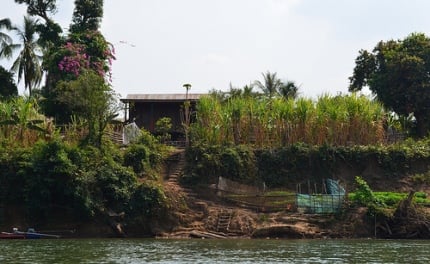The damming of the Mekong River continues.
Following China’s announcement last month that hydropower development on the upper Mekong and other river basins will surge ahead, Cambodia’s National Assembly has voted to move forward with the Lower Sesan 2 dam – a dam just off the mainstream river that will have staggering social and environmental consequences.
For years, villagers in Cambodia’s rural northeast – home to most of the country’s indigenous communities – have campaigned against the dam, arguing that it will destroy rare fish and protected forests. One study reported in the Bangkok Post deemed the Lower Sesan 2 “the most damaging with the least benefit” of the 27 dams planned on Mekong tributaries between 2015 and 2030.
That doesn’t appear to bother Cambodia’s lawmakers. Following the February 15 vote guaranteeing financial backing, China’s Hydrolancang International Energy Co. Ltd and the Cambodian conglomerate Royal Group are set to begin construction next year.
Read: China gives green light to new era of mega-dams
In China, attention has centred on the revelation in the 2011-15 energy sector blueprint that long-shelved plans for dams on the Nu River are once again in play. But the news that China is also moving ahead with dams on the Lancang (the Chinese name for the Mekong River) and Yarlung Zangbo (Brahmaputra) river basins could have even farther-reaching impacts.
In 2011, Australian Mekong Resource Centre director Philip Hirsch wrote in thethirdpole.net of a lesser-known consequence of China’s dam boom: its fueling of hydropower ambitions lower down the river.
Read: Cascade effect: Regional impacts of China’s Mekong dams
Hirsch highlighted several ways in which China has directly and indirectly encouraged dam building on the lower Mekong: the “demonstration and equity” effect (as in, China’s dammed this river, so why shouldn’t we?), as an investor, and by changing the hydrology of the river so that the economics of hydropower are more attractive.
“It is clear that the environmental politics around dams on the Mekong mainstream are intricately bound up in a wider world of geopolitics,” Hirsch wrote. “What is notable is the way in which these geopolitics are now enmeshed in resource and environmental concerns over a shared river system.”
Investigations by scientists, locals and NGOs have found that the Lower Sesan 2 dam could destroy up to 9% of the Mekong region’s fish biomass, as well as displacing multiple villages.
According to the Cambodia Daily newspaper, the National Assembly also voted to bail out the developers should the US$781 million project fail. Apparently it’s not only the dam’s environmental risks that the public will be shouldering.
(Image by International Rivers via Flickr)
